Arrowwood Viburnum Tree
- June 13, 2023
- 0 comment
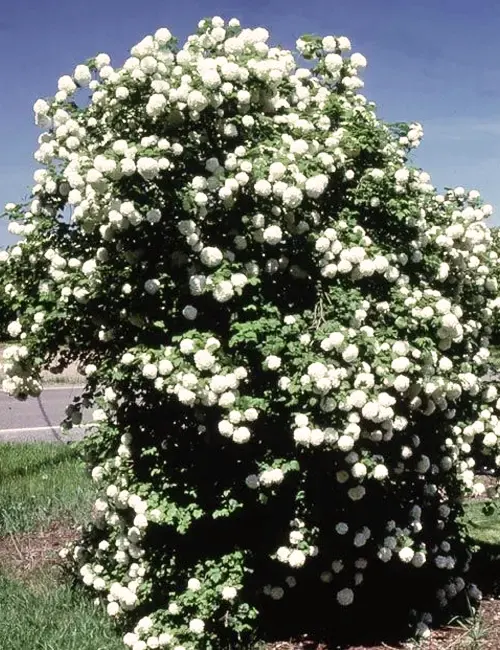
Common Name: Arrowwood, Southern Arrowwood, or Roughish Arrowwood.
Botanical Name: Viburnum dentatum.
Family: Adoxaceae family.
The Arrowwood Viburnum tree (Viburnum dentatum) is a captivating native species that add both aesthetic and ecological value to any landscape. Its elegant appearance, attractive flowers, and abundant berries make it a popular choice among gardeners and nature enthusiasts alike. In this article, we will explore the various aspects of the Arrowwood Viburnum, including its common and botanical names, family, characteristics, care requirements, and more.
Plant Type
This viburnum is a deciduous shrub that can grow into a small tree with proper care and pruning. Its upright growth habit gives it an appealing and well-structured appearance.
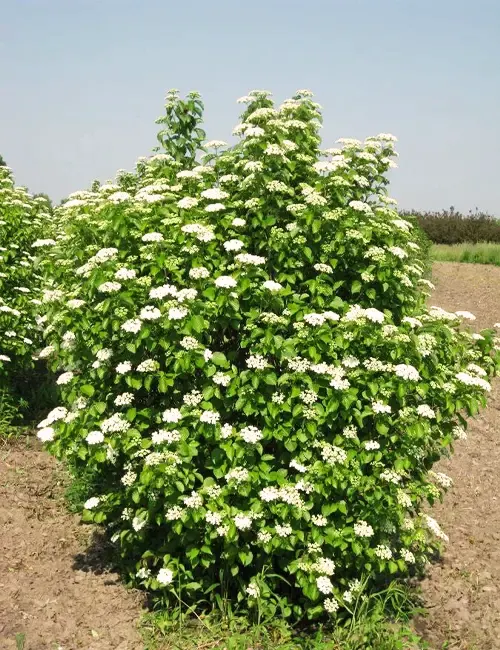
Mature Size and Growth Rate
Arrowwood Viburnum trees typically reach a height of 6 to 10 feet (1.8 to 3 meters) and have a spread of 8 to 12 feet (2.4 to 3.7 meters). The growth rate of this species is moderate, allowing it to establish itself without becoming overly invasive.
Soil Type
These trees prefer moist, well-draining soils. However, they are adaptable and can thrive in a wide range of soil types, including clay, loam, and sandy soils.

Hardiness Zones
The Arrowwood Viburnum is hardy in USDA zones 3 to 8, making it suitable for a diverse range of climates.
Sun Preference
While this species can tolerate partial shade, it performs best in full sun conditions. A minimum of six hours of direct sunlight is ideal for optimum growth and flower production.
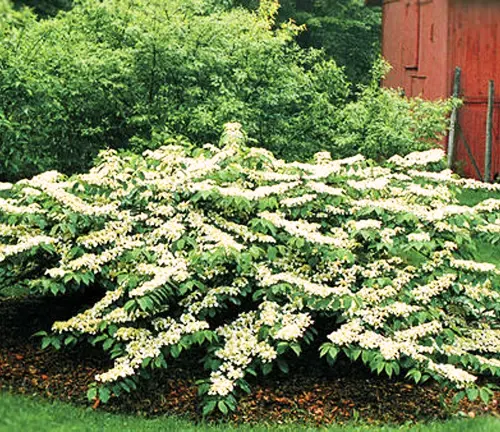
Soil Preference
Arrowwood Viburnum trees are adaptable to various soil conditions. They prefer slightly acidic to neutral soil pH levels ranging from 5.5 to 7.5.

Attributes
This species boasts several desirable attributes. Its dark green leaves transform into shades of reddish-purple during the fall, providing a stunning display of autumn color. In late spring to early summer, the tree produces clusters of creamy white flowers that attract pollinators such as bees and butterflies. These flowers give way to blue-black berries, which not only add visual interest but also serve as a valuable food source for birds.
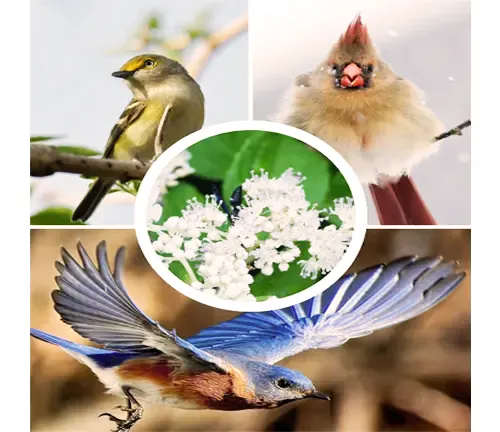
Wildlife Value
The Arrowwood Viburnum is highly beneficial to wildlife. The berries it produces are a favorite food source for various bird species, including thrushes, catbirds, and finches. Additionally, the dense branching structure provides cover and nesting sites for birds and small mammals.
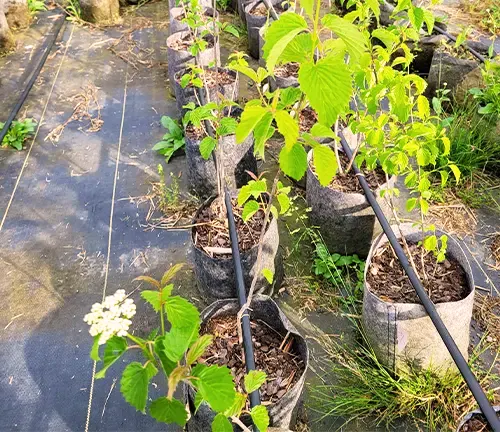
Care
Taking care of an Arrowwood Viburnum tree is relatively straightforward. It requires regular watering during its establishment period but becomes more drought-tolerant once established. Applying a layer of organic mulch around the base of the tree helps retain moisture and suppress weeds. Pruning should be done in early spring to maintain a compact and tidy shape.
Benefits
The Arrowwood Viburnum offers numerous benefits. Its aesthetic appeal and wildlife-friendly attributes make it a valuable addition to any garden or natural area. The tree’s dense foliage also provides privacy and acts as a natural windbreak. Moreover, its ability to attract pollinators contributes to the overall health and biodiversity of the surrounding ecosystem.
Invasive
The Arrowwood Viburnum is not considered invasive. It is native to North America and plays an essential role in local ecosystems.
Lifespan
Under favorable conditions, Arrowwood Viburnum trees can live for several decades, with an average lifespan of 20 to 30 years.
Disadvantage
One potential disadvantage of the Arrowwood Viburnum is its susceptibility to some common pests and diseases, such as aphids, scale insects, powdery mildew, and leaf spot. However, with proper care and monitoring, these issues can be effectively managed.
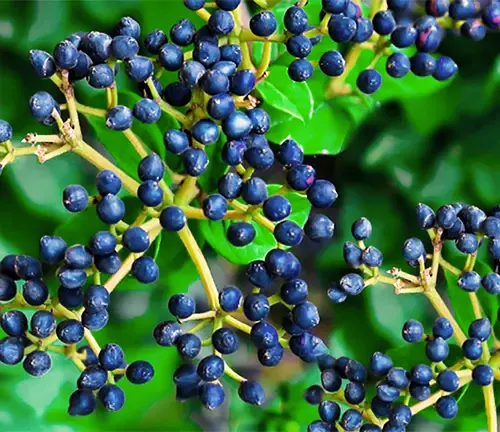
Edible or Not
The berries of the Arrowwood Viburnum are mildly toxic to humans and should not be consumed. However, they are an essential food source for wildlife.
Habitat Requirements
This species is adaptable and can thrive in a variety of habitats. It is commonly found in woodland edges, stream banks, and moist areas, but can also tolerate drier conditions once established.
Name Origin
The common name “Arrowwood” refers to the Native American tradition of using the straight and flexible stems of this plant to make arrows. The name pays homage to the practical uses of the tree in indigenous cultures.
Fun Facts:
- Arrowwood Viburnum is a larval host plant for the Spring Azure butterfly (Celastrina ladon) and provides crucial habitat for its caterpillars.
- Native American tribes used the bark of Arrowwood Viburnum medicinally to treat various ailments, including fevers and stomach complaints.
- The attractive berries of this tree are sometimes used in floral arrangements and wreaths for their vibrant color and texture.
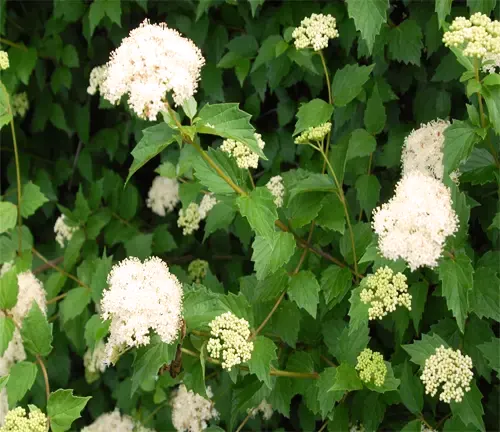
Characteristics
Arrowwood Viburnum trees feature dense, rounded canopies with deep green, toothed leaves. The flowers are small and white, forming flat-topped clusters called cymes. The blue-black berries are borne in late summer and persist into the winter, adding interest to the landscape.
Varieties
Some popular varieties of Viburnum dentatum include ‘Blue Muffin,’ ‘Chicago Lustre,’ and ‘Little Joe.’ These cultivars offer slight variations in size, berry production, and fall color.
Pruning
Pruning should be done in early spring before new growth appears. Remove any dead, damaged, or crossing branches to maintain a healthy structure. Light pruning can also be done after flowering to maintain the desired shape and size.
Propagating
Arrowwood Viburnum trees can be propagated through various methods, including seed germination, softwood or hardwood cuttings, and layering. However, for consistent and reliable results, it is often best to acquire young plants from reputable nurseries.
Common Pests & Diseases
Common pests that may affect Arrowwood Viburnum trees include aphids, scale insects, and viburnum leaf beetles. Diseases such as powdery mildew, leaf spot, and bacterial leaf spot can also occur. Regular monitoring, proper sanitation, and timely treatment, if necessary, can help manage these issues effectively.
Frequently Asked Questions:
Q: Are the berries of Arrowwood Viburnum poisonous to pets?
A: While the berries are mildly toxic to humans, they are generally not considered highly toxic to pets. However, it is advisable to prevent pets from ingesting large quantities as a precautionary measure.
Q: Can Arrowwood Viburnum tolerate salt spray?
A: This species has moderate salt tolerance, making it suitable for coastal landscapes. However, it is best to provide some protection from direct exposure to salty winds.
Q: How often should I water my Arrowwood Viburnum tree?
A: During the establishment period, regular watering is crucial. Afterward, it is generally drought-tolerant but will benefit from occasional deep watering during prolonged dry spells.
Conclusion: The Arrowwood Viburnum tree is a captivating and ecologically valuable species that deserves a place in gardens and natural landscapes. With its attractive foliage, delightful flowers, and abundant berries, it offers a visual feast while providing food and habitat for wildlife. By incorporating this native beauty into our landscapes, we can enhance biodiversity, support pollinators, and enjoy the many benefits it offers for years to come.



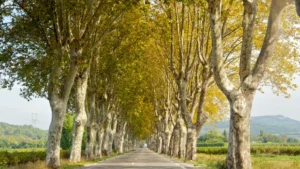
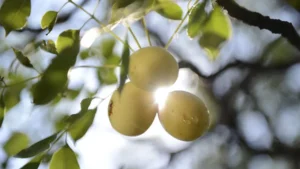
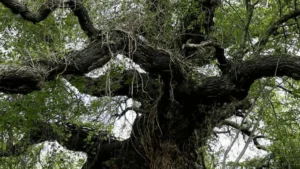

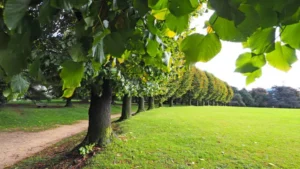
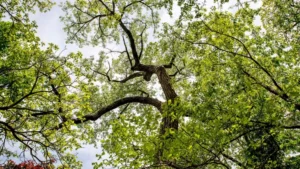
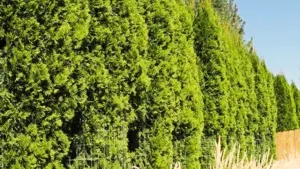

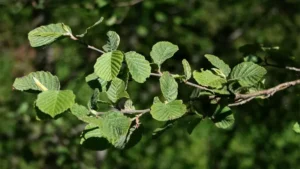

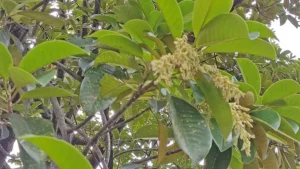
Leave your comment